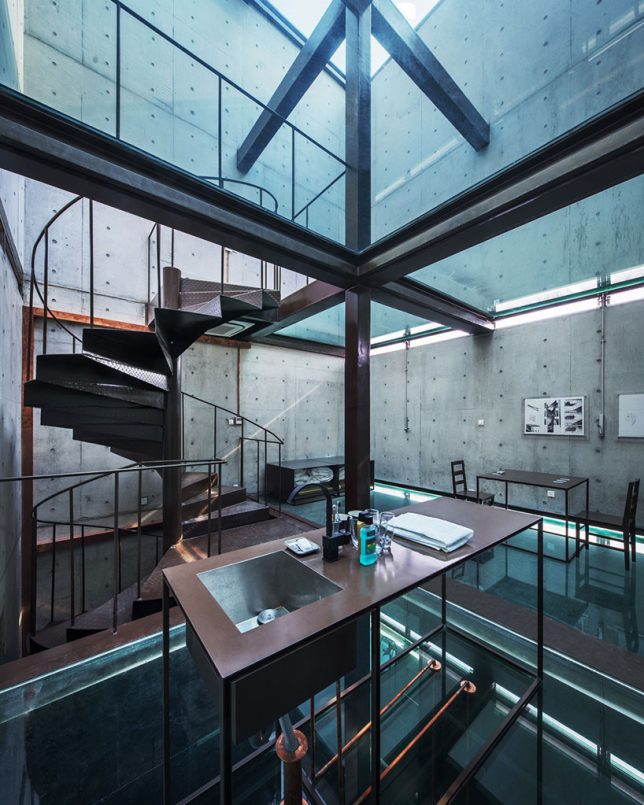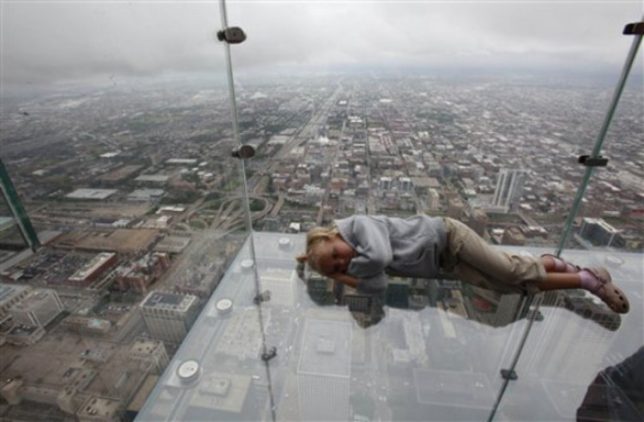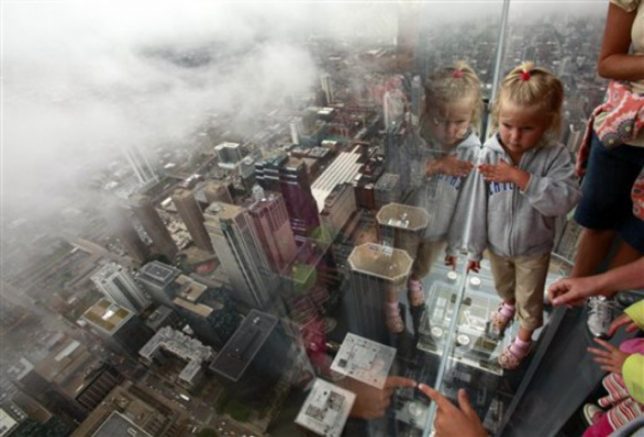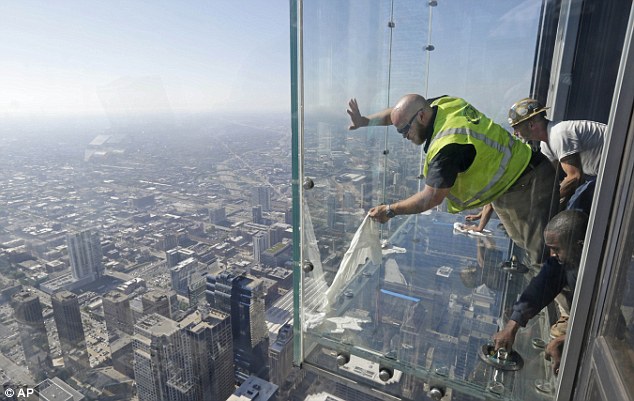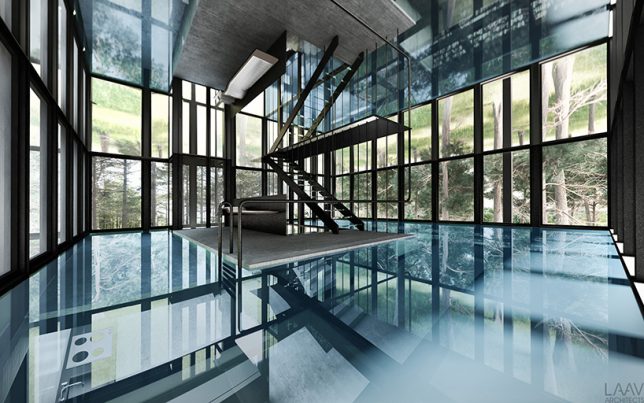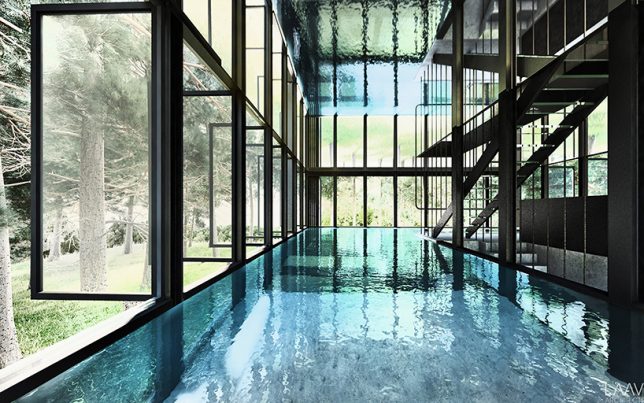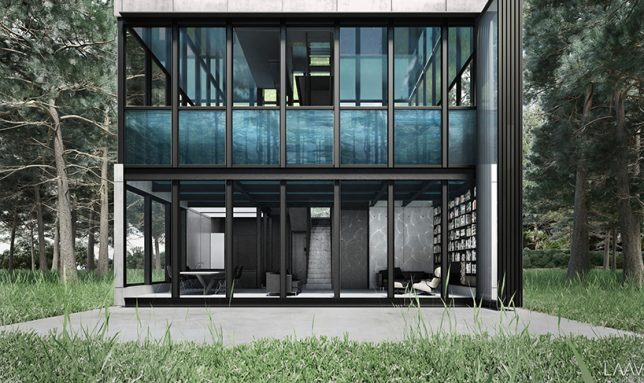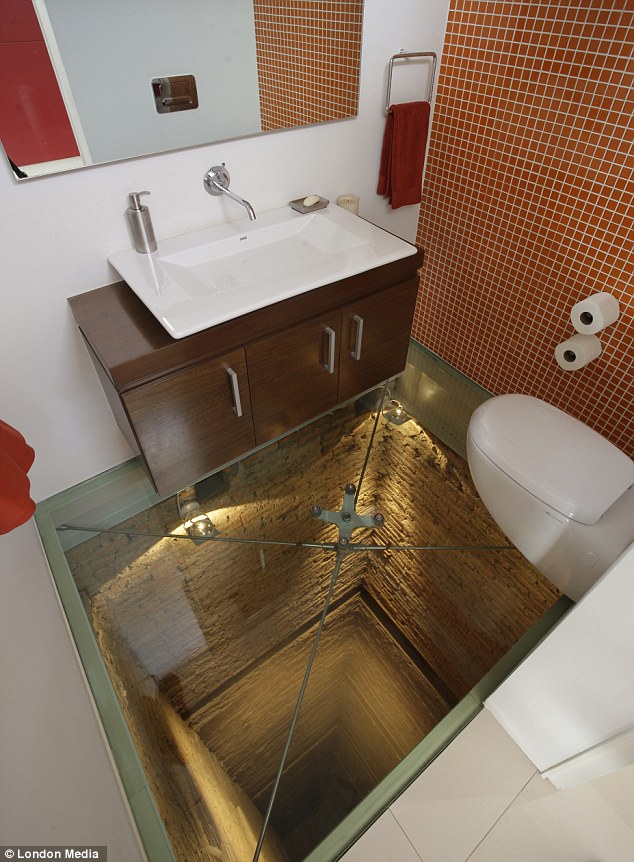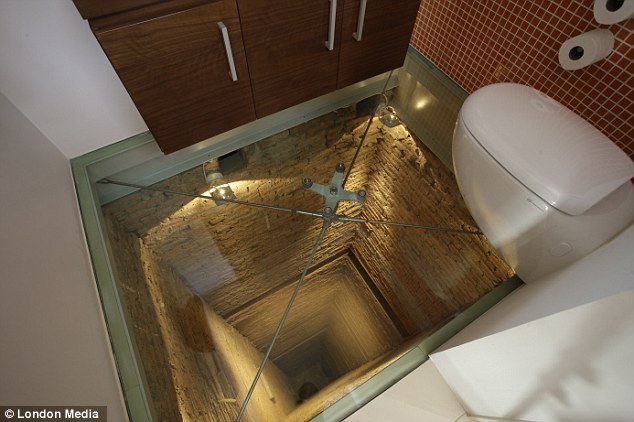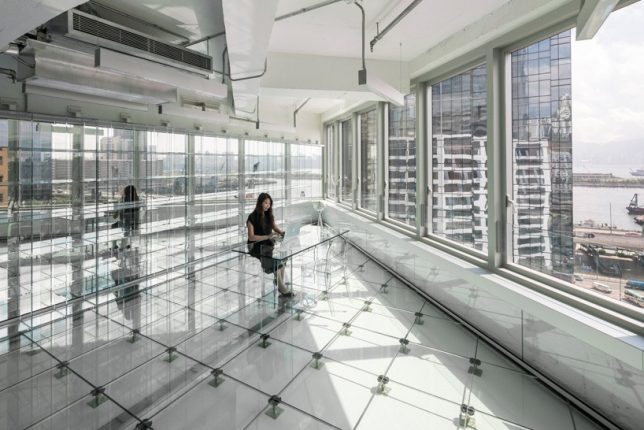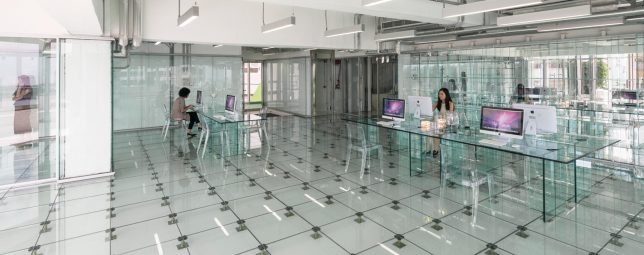Vertical Glass House by Atelier FCJZ
Originally completed as an entry into the Shinkenchiku Residential Design Competition, the stunning ‘Vertical Glass House’ by Atelier FCJZ now serves as a guest house for visiting artists and architects (who apparently don’t mind being exposed to each other – as even the toilet sits upon a transparent glass floor.)
Glass Balcony at the Willis (Sears) Tower
Tourists were terrified when the floor of a glass balcony shattered, suspended 103 stories above ground level at the Willis Tower in Chicago. Anyone who pays to access ‘The Ledge’ is told the glass is unbreakable, but that’s not entirely true – every now and then, it shatters and must be replaced, despite being three inches thick and supposedly withstanding 5 tons of weight.
Villa Clessidra by Laertis-Antonios Ando Vassiliou (LAAV)
One entire story of this forest home by LAAV Architects is made of glass, housing a swimming pool that fills the entire level all the way to its transparent walls. Above it, the floor of the next story is glass, allowing residents to look down on bathers as they swim.
Toilet Over a 15-Story Elevator Shaft
Often described as ‘the world’s most terrifying toilet,’ the bathroom of this penthouse in a 1970s building in Guadalajara, Mexico sits on a glass floor looking down into a 15-story elevator shaft. “A characteristic feature of the project is that the volume that was originally intended for a second elevator, and was never installed, becomes a powder room with a glass floor that looks down all the 15 levels,” explain Hernandez Silva Arquitectos.
133 Wai Yip Street by MVRDV
MVRDV turns a former factory into a stunning office in East Kowloon, Hong Kong, stripping the building down to its bones and replacing just about everything with glass and stainless steel. “We are moving into a transparent society, businesses are becoming more open with the public, and people care more about what goes on behind closed doors. In that way, a clear workspace leaves nothing questinable, nothing hidden; it generates trust, but it is also an opportunity for the building to become a reminder of the industrial history of the neighborhood, monumentalized in a casing of glass.”
